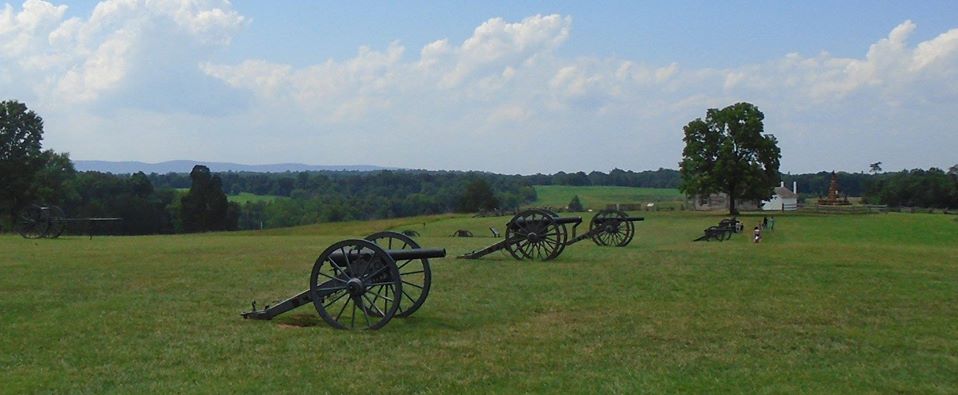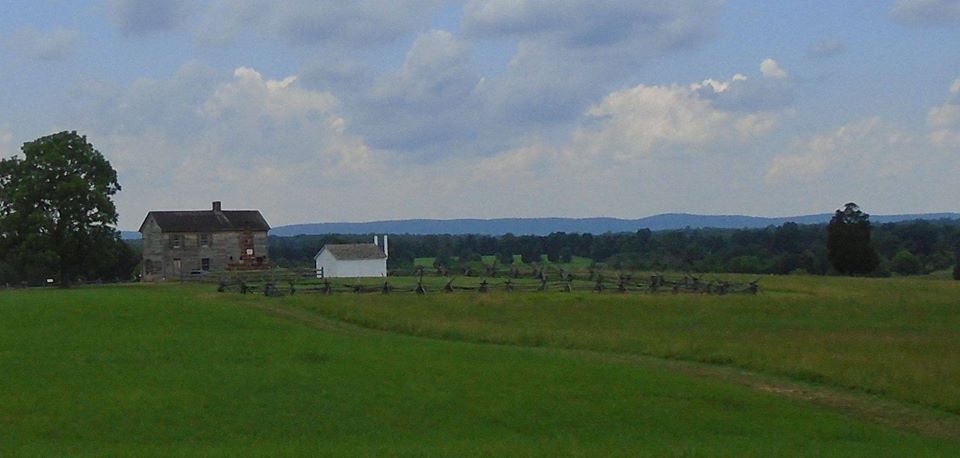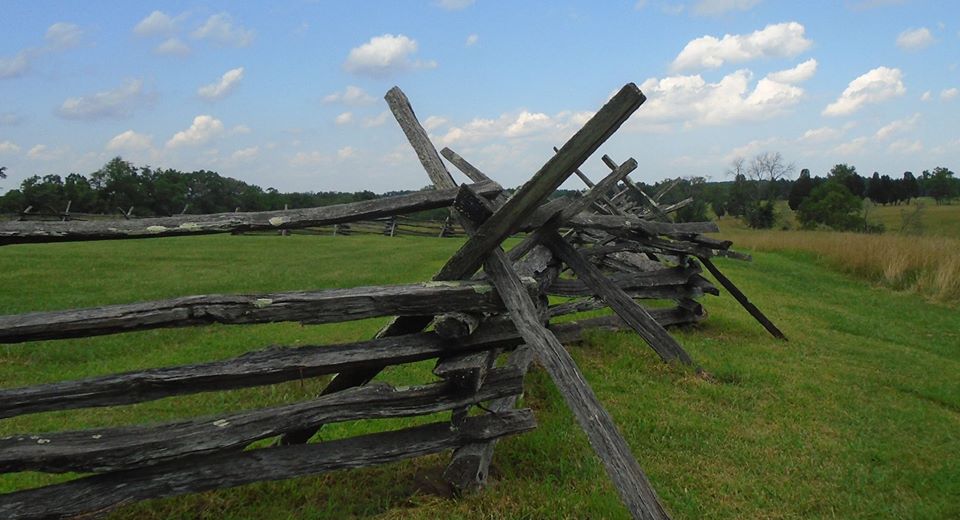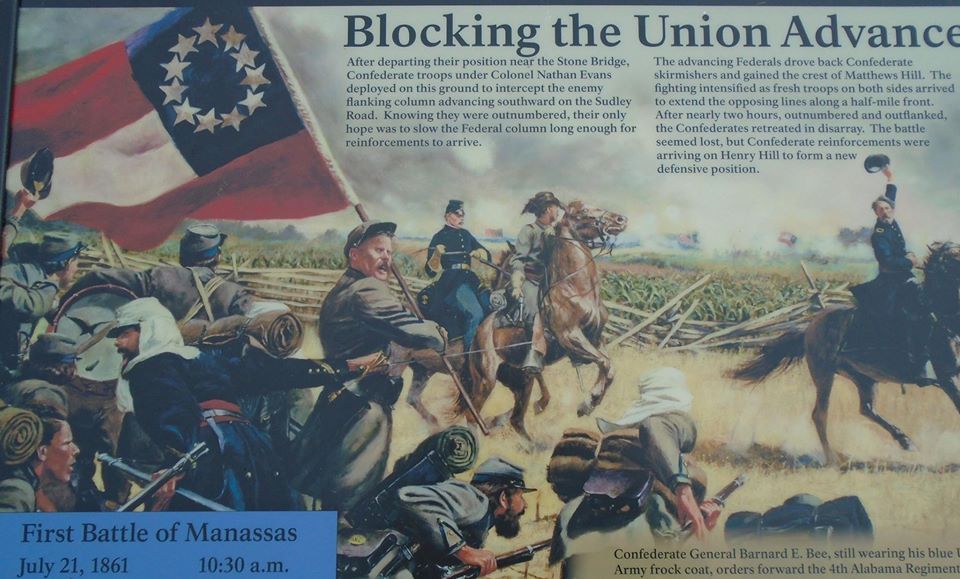I was supposed to pick up Alex in Woodstock at 630, which would have meant leaving home into rush hour traffic, so I got out a little early and stopped off at Manassas battlefield on the way. The Yankees tended to name battlefields after natural features. The Confederates preferred nearby towns. This one is named after the town of Manassas and since it took place in Virginia, that is what the Park Service calls it too. In the North it is the Battle of Bull Run, after the nearby creek. Similarly, Antietam is named according to the Union name because it is in the Union state of Maryland. Southerners called Sharpsburg, after the town.
There were two big battles on this ground. Both were confused affairs and in the end the South won both. Manassas 1 was the first major battle of the Civil War. The hero, at least from the Southern point of view, was Thomas Jackson, afterwards called Stonewall Jackson. The Rebs were retreating when they were rallied by General Bernard Bee, who said something like, “There stands Jackson like a stone wall! Rally behind the Virginians!” There is a very muscular statue of Jackson on the spot.
Nobody really knew what to do in this battle. Many of the Confederates were still wearing their Union uniforms. A Wisconsin regiment was fired on by Union troops because Wisconsin troops were dressed in previously perfectly acceptable military gray. On the other hand, troops from Louisiana approached much closer to Union lines before coming under fire because they were dressed in blue. Beyond that, the Confederate stars and bars looked a lot like Old Glory. That is why they adopted the better known crossed bars battle flag.
1st Manassas showed the importance of railroad and the idea that you could move troops rapidly and decisively. The battle was going poorly for the Confederates when Brig. Gen. Joseph E. Johnston arrived from the Shenandoah Valley by railroad and the new troops turned the tide.
A couple of things to remember about this or any other historical site – the people involved didn’t know what we know. At Manassas, both sides thought of this as kind of an easy affair. The war would be over quickly, they thought. The fact that there was really a civil war on was hard to accept. Another thing to recall is all that old stuff was new at the time. Many of the houses were built within the last decades. They were newer for them than my house is for me.
Feel some sympathy for the unfortunates living on the land. This was not a battlefield to them. It was just their farms and homes, when suddenly a large number of armed men showed up and starting shooting at each other.
The most memorable resident is one Wilbur McLean, a local wholesale grocer with a house near Manassas on what became the battlefield. After the unpleasantness, he decided the neighborhood was a little too active. He decide to move to quieter part of the state. He chose the quiet little town of Appomattox. Generals Lee and Grant signed the surrender documents in the parlor of his new house.
My first picture shows the Stonewall monument. Next is a row of cannons. All these battlefields are full of canons. Must have had a lot fo them. The wooden fence is interesting because it is the kind common at the time. It indicates how plentiful wood was at the time. Finally, is a picture of one of the markers that shows the various types of uniforms and the Confederate battle flag.





